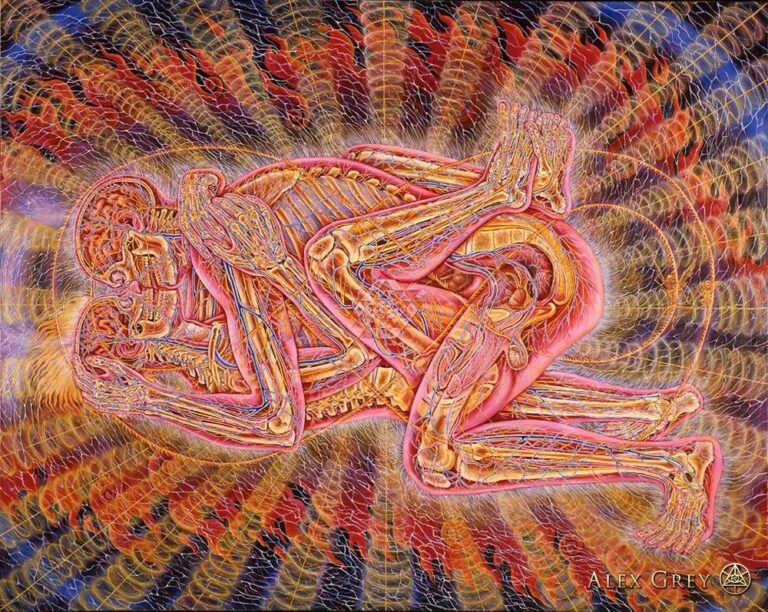“Parenting is one of the most challenging, demanding, and stressful jobs on the planet. It is also one of the most important, for how it is done influences in great measure the heart and soul and consciousness of the next generation, their experience of meaning and connection, their repertoire of life skills, and their deepest feelings about themselves and their possible place in a rapidly changing world.” ~ Jon and Myla Kabat-Zinn, Everyday Blessings: The Inner Work of Mindful Parenting
What I see time and time again, in parenting magazines and articles discussing whether time-outs on the naughty step are setting healthy boundaries or entirely damaging our un-spoilt little creatures of love.
Or perhaps debating over how best to deal with a tantrum – to smother them in hugs and kisses or throw the cereal off the table and join in – is a desperate grab in the dark for what the new generation, or next wave of parenting techniques will look like.
Like any other meditative advice, the best way I’ve found, (apart from living it and staying as present as possible), is to keep it simple.
One or two phrases are more than enough to remember in a day full of biscuit baking and leafing through the old favourites on the book shelf, and so I’ve shrunk it down into a few simple phrases… Zen style.
Do What Feels Right
The first one, like most of the others is a rule for all of us, but ESPECIALLY for kids – Do what feels right at all times.
This simple phrase allows kids to accept their emotions, but also leads them deeper down their spiritual path. It even has the potential to raise strong, peaceful warriors with high morals and the emotional maturity to become leaders in a world fraught but also ripe with potential. Do what feels right encourages children to trust themselves, without exception.
 It is perhaps for this reason that this life-changing phrase may be a little intimidating for the parent. Setting out into unchartered waters is where the ego (and the painful memory of exactly how unmindfully we may have been brought up), flinches, often wanting to pay it forward and forgetting what a huge amount of damage we are doing in the process.
It is perhaps for this reason that this life-changing phrase may be a little intimidating for the parent. Setting out into unchartered waters is where the ego (and the painful memory of exactly how unmindfully we may have been brought up), flinches, often wanting to pay it forward and forgetting what a huge amount of damage we are doing in the process.
As parents, care givers, aunts, uncles, grandparents or mentors, keeping our noses out of exactly how our children may chose to do what feels right keeps us firmly in our place; as advisors and mentors to kids rather than their nagging buddy.
As soon as we see children as an extension of ourselves or a badge of honour to be worn with pride, we immediately regress back to acting from our own interests rather than theirs.
So, every time you come across a child asking you a question, apparently working out what to do in a situation, or just plain having a melt down, encourage them, in your own way, to do what feels right. Of course this is the difficulty with other humans but especially kids as they have not yet developed the tools to express or even locate what it is they are feeling.
Second guessing what’s wrong and commentating it back to them ‘I can see you’re feeling very frustrated right now, even though you don’t know why. I can understand that. Would you like me to stay with you until you feel better?
Give them the control yet also encourages them to accept whatever they’re going through. Rather than ‘solving’ the problem, we let go of our need to control and take a step back, letting them healthily experience and accept their emotions without trying to change them yet at the same time show them we’re there for them.
Do what feels right also le ts them trust their own judgment and tap into their spiritual mentors or soul potential from an early age. Though these things will be growing within them anyway; through their experiences and heightened awareness, nurture it in them.
ts them trust their own judgment and tap into their spiritual mentors or soul potential from an early age. Though these things will be growing within them anyway; through their experiences and heightened awareness, nurture it in them.
Modern society may cruelly take it away from them to some degree, and they may learn through social groups and peer pressure later on to dub it down, but they will always return to it, and faster still if you encourage them to follow themselves and no-one else.
Do Anything You Want As Long As It Doesn’t hurt
This rule is a tricky one as getting hurt entirely depends on your point of view. Also it depends how far you want to take it. Don’t hurt others by biting or kicking your playmates is an obvious one, but you can encourage more mindfulness by extending this to animals, rivers, plants.
Personally I don’t have any problem with kids picking flowers (though some people would find this more of a crime than throwing water at a cat!), but I try to help them become aware of the impact it may have. ‘If we pick too many maybe the bees won’t be able to make any honey for us’ (vegans avert your eyes).
Not hurting includes not hurting ourselves for the sake of the approval of others. It also includes not hurting mummy or daddy. Not hurting can mean a lot of second guessing when the consequences of actions are not immediately clear. We don’t want to lay the weight of the world on children’s shoulders by always using reasons like too expensive or annoying others.
Letting them see for themselves as much as possible will help them in the long run. For example when they are shouting at the top of their lungs in a waiting room full of people, let them see the tuts and frowns around them.
They still have the choice whether to quieten down or carry on and face getting snapped at. Be their supporter but not their shield. That way they learn responsibility but that someone’s got their back.
This Too Shall Pass
The final one is to teach impermanence, because especially in those difficult teenage years ahead, kids can get caught in this permanence trap and it can create blockages into adulthood if not softened with some lessons in it early on.
As soon as we learn that everything is there to help us grow, no matter how difficult, the easier it will be for them to face life and get the most out of it without getting stuck in stagnation and doubt.
 Create a ritual in the day and encourage participation in the seasons, weeks and daily cycles that naturally happen. I was always anti-routine when I first set out on my parenting journey, hoping to teach spontaneity rather than normality.
Create a ritual in the day and encourage participation in the seasons, weeks and daily cycles that naturally happen. I was always anti-routine when I first set out on my parenting journey, hoping to teach spontaneity rather than normality.
But I soon realized that, as well as needing security and reassurance when those emotions do bubble up, ritual and routine also teach us about impermanence.
As well as the obvious parts of tuning us in to the natural rhythms of rising and falling, strangely, the more (loose) structure we have as kids on a small scale, filled of course with lashings of adult interaction and loving activities and exchanges, the more in tune with the bigger rhythms kids can be.
Of course it can be tricky to strike a balance. Perhaps one day in the week there is full on spontaneity; where you eat pudding before dinner, backcomb your hair and do a frenetic dance before bed rather than a calming bedtime story (what the hell, let’s make it every day). This way they don’t get stuck in routine but can appreciate it for what it is – a tool for self love, being productive and generally taking care of ourselves.
Despite the realms of parenting advice, the best thing for kids is to become an example for them. Respecting them will lead to them respecting you, being sparky and interested in the world around you will lead the way for them.
And as for how compassionate and authentic they end up being, well that’s entirely up to them, all we can be is crazy fun-loving guides, magicians and storytellers, and above all, someone to cuddle.
Image Source:























